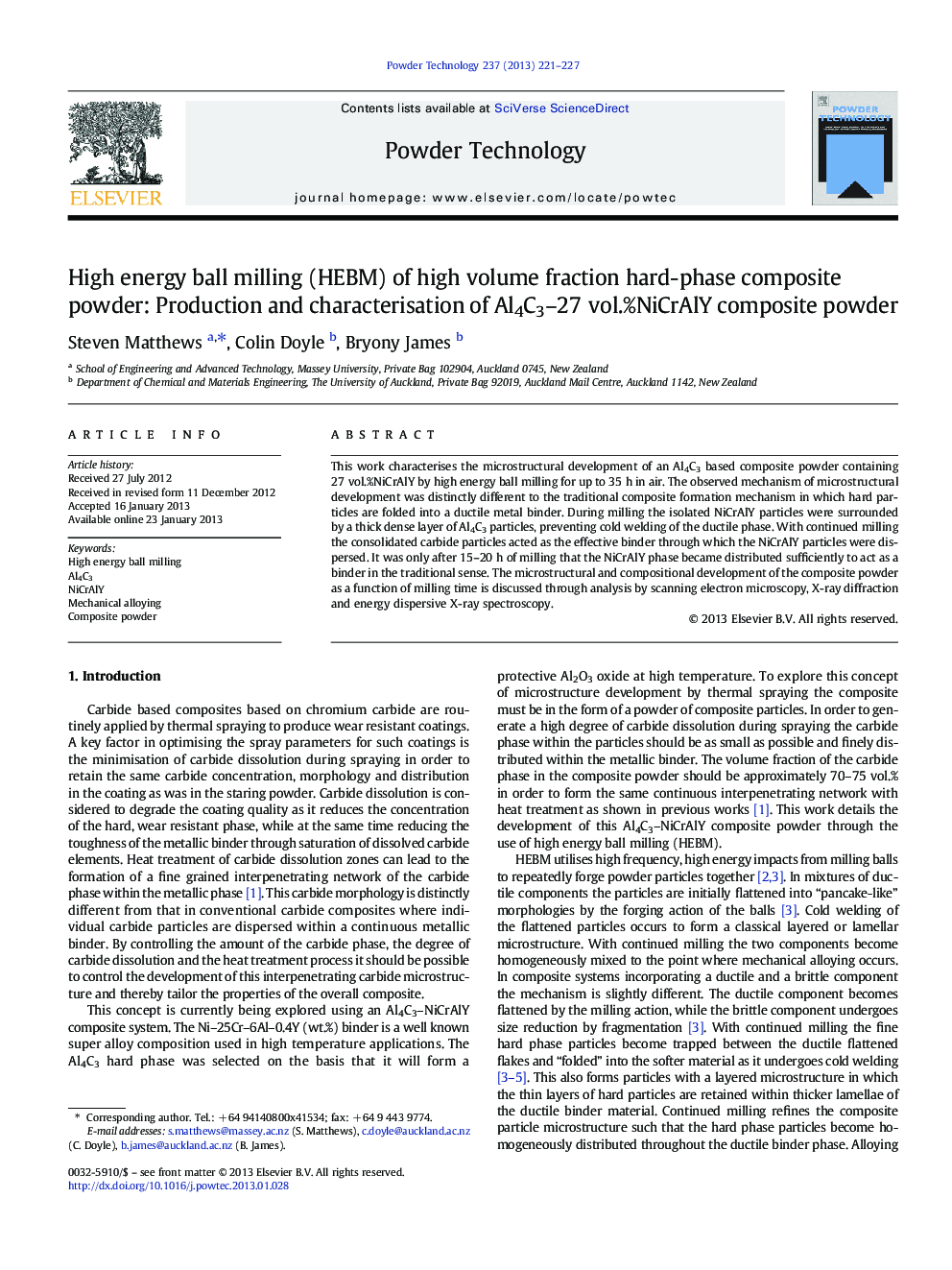| Article ID | Journal | Published Year | Pages | File Type |
|---|---|---|---|---|
| 236838 | Powder Technology | 2013 | 7 Pages |
This work characterises the microstructural development of an Al4C3 based composite powder containing 27 vol.%NiCrAlY by high energy ball milling for up to 35 h in air. The observed mechanism of microstructural development was distinctly different to the traditional composite formation mechanism in which hard particles are folded into a ductile metal binder. During milling the isolated NiCrAlY particles were surrounded by a thick dense layer of Al4C3 particles, preventing cold welding of the ductile phase. With continued milling the consolidated carbide particles acted as the effective binder through which the NiCrAlY particles were dispersed. It was only after 15–20 h of milling that the NiCrAlY phase became distributed sufficiently to act as a binder in the traditional sense. The microstructural and compositional development of the composite powder as a function of milling time is discussed through analysis by scanning electron microscopy, X-ray diffraction and energy dispersive X-ray spectroscopy.
Graphical abstractCross sectional back scatter electron image of an Al4C3–27 vol.%NiCrAlY composite powder particle after 35 hours of high energy ball milling.Figure optionsDownload full-size imageDownload as PowerPoint slideHighlights► An Al4C3–27 vol.%NiCrAlY composite powder was produced by high energy ball milling. ► The microstructural development mechanism differed from low hard phase composites. ► The hard phase formed the binder in the composite particles out to 20 h milling. ► Mechanical alloying occurred but no degradation phases were observed by XRD.
